Tip of the Day 62: How does your Robot Hear?
The previous two tips discussed the concept of when the sorting output actuates (at the end of integration) and what the automation equipment does with the signal (drops the parts, looses them or handles them correctly). This tip deals with the intermediate concept: the connection between the eDART and the automation and when the automation listens.
By the way, I shall probably use “Diverter”, “Robot” and “Automation” interchangeably. They all mean “that thing that handles the parts when they come out of the mold.”
Concept #1: Level Actuated Automation vs. Edge Actuated Automation
In order to set your automation equipment to work properly you need to find out if it is “level” or “edge” actuated.
Level Actuated:
This is automation that simply moves the parts according to the sorting signal from the eDART at whatever level the signal is when the automation decides to move. In these cases the top tick box on the Diverter Timing window can be ticked. The sorting signal does not have to go on and off on every cycle. A flipper chute is an example of such a device. Once the chute is flipped to the selected position (e.g. “Good”) it can stay there shot after shot as long as the parts are good. This also prevents excessive wear on a flipper chute. Some robots also simply look at the signal at a certain time (e.g. when the parts are over the reject bin) and take action based on the sorting signal at that time.
(In these graphs the integration limit is the end of screw run)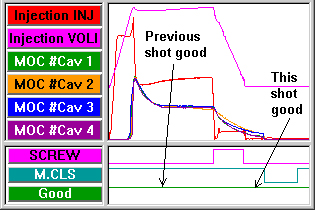
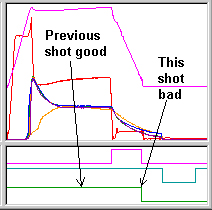
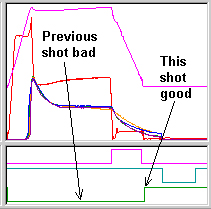
Edge Actuated:
Some robots “look” for the sorting signal (“Good”) to switch from off to on every cycle in order to understand that the part is good (see Tip #2 for reversed logic). If the signal does not switch on every cycle then the robot ignores the signal. We have reports that Engel automation works this way. With edge actuated equipment you must tick the second box on the Diverter Timing and set a hold-on time for the robot.
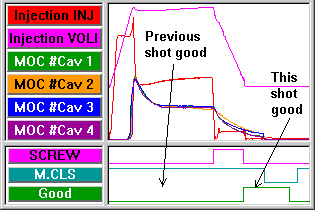
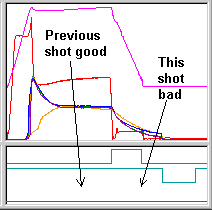
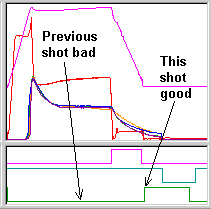
Note that in the “Edge Actuated” scenario the “Good” output is always switched off 3 seconds after the end of the cycle regardless of the level. This ensures that every cycle starts with the “Good” off so that there will always be an “edge” (off – on transition) for every good shot.


